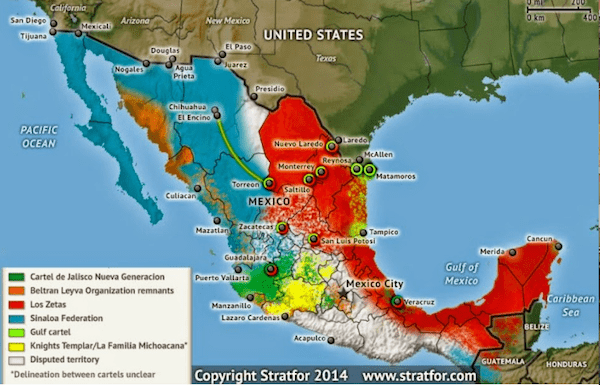Daniel Tello grew up in Monterrey, Mexico, in a well-educated, affluent family. By just about any standard, he had a good life. But Monterrey has a violent side. Across Northern Mexico, citizens have seen drug cartels in their cities, causing violent outbursts, kidnapping, and much more. Tello came to America to study at SMU, not only for the education, but to escape the dark side of Monterrey.
“It’s not easy to live in fear, so people that had the means to get out of that life, would absolutely do it,” said Tello, who came to SMU in 2013, and is studying environmental engineering.
There are currently 62 students at SMU from Mexico. Among these are students who lived in Monterrey and other violent areas, and had to leave home because of cartel violence in Northern Mexico.
“It’s something that people don’t understand, the main problem with the cartels, is them coming through Mexico and through Monterrey to get to the American border,” said Tello.
Jennifer Apperti, who attended Monterrey Tech University, in Monterrey, Mexico, is now the Texas-Mexico program specialist at SMU. She believes students had to leave Monterrey because families see no other way to protect their children.
“People didn’t know what to do, so some students moved,” said Apperti. “People saw a lot of similarities between Monterrey Tech and SMU in many different ways.”
Both SMU and Monterrey Tech have high academic standards, and are located in large cities. Being in Texas, and closer to home then other colleges in America, SMU is the alternative Mexican college students seek to feel safe.
Federico Canavati agrees that SMU is a good alternative for some Mexican students.
“Monterrey was one of the safest cities in the world before the cartel violence started. But when two students were killed on Monterrey Tech campus, people started to panic because we didn’t know what it was,” said SMU alumni Federico Canavati, who graduated from the Cox Business school in 2015, and has since moved back to Monterrey.
In March 2010, two Monterrey students were gunned down inside the main gates of Monterrey Tech University. These students were caught in a shootout between cartel members and the Mexican army. This incident started to put panic in the hearts of families.
“When I found out about the violence on college campuses, my first reaction was to bring my kids back home,” said Tello’s mother, Silvya Magdalena Vargas Gracia, who lives in Monterrey. Her oldest child, Tello’s older brother, was a student at Monterrey Tech, but then transferred to Cornell University in the U.S.
“Having my kids in a college town where violence was around made me feel very nervous thinking something could happen to them at any time,” said Tello’s mother.
There were multiple tragic incidents throughout 2010 that involved Monterrey bystanders and students. More than 15,000 people were killed because of cartel violence in that year alone. This all started when the Zeta cartel moved into Monterrey.

“At that time, I don’t think anyone felt safe within the city, because I have to say there was really bad years, you couldn’t start going out when it was getting dark anymore, after the incident on Monterrey Tech,” said Apperti.
Violence due to the Mexican drug war has been ongoing across the country for years, according to news accounts.
“The violence people talk abut was mostly panic. I think people chose SMU because the rules were more strict, the school was safe and the education was good,” said Canavati.
Canavati believes now that Mexico is much safer than when he and his older brother first left, and that now students from Mexico come to SMU more as a family tradition rather than to escape the violence.
Here are some facts about cartel violence gathered from Reuters Special Report in 2012:
· Conflict between government forces and the cartels has claimed about 55,000 lives in the past five years, including more than 3,000 police officers and soldiers.
· Formed in 1998 by 14 former Mexican soldiers, the Zetas have grown to command more than 10,000 gunmen from the Rio Grande, on the border with Texas, to deep into Central America.
· Zetas currently occupy 17 of Mexico’s 32 entities. The most out of all of Mexico’s drug cartel.
· Zetas pay a network of spies, called “hawks.” Hawks are usually young men and women paid about $600 a month. Minimum wage is Mexico is around $5 a day.
· In 2012, Zetas had warehouses in Laredo, Dallas and Houston used to traffic guns and drugs to and from Mexico.








